Smart Meal Management Solutions to Elevate Employee Satisfaction & Reduce Food Wastage at Workplaces
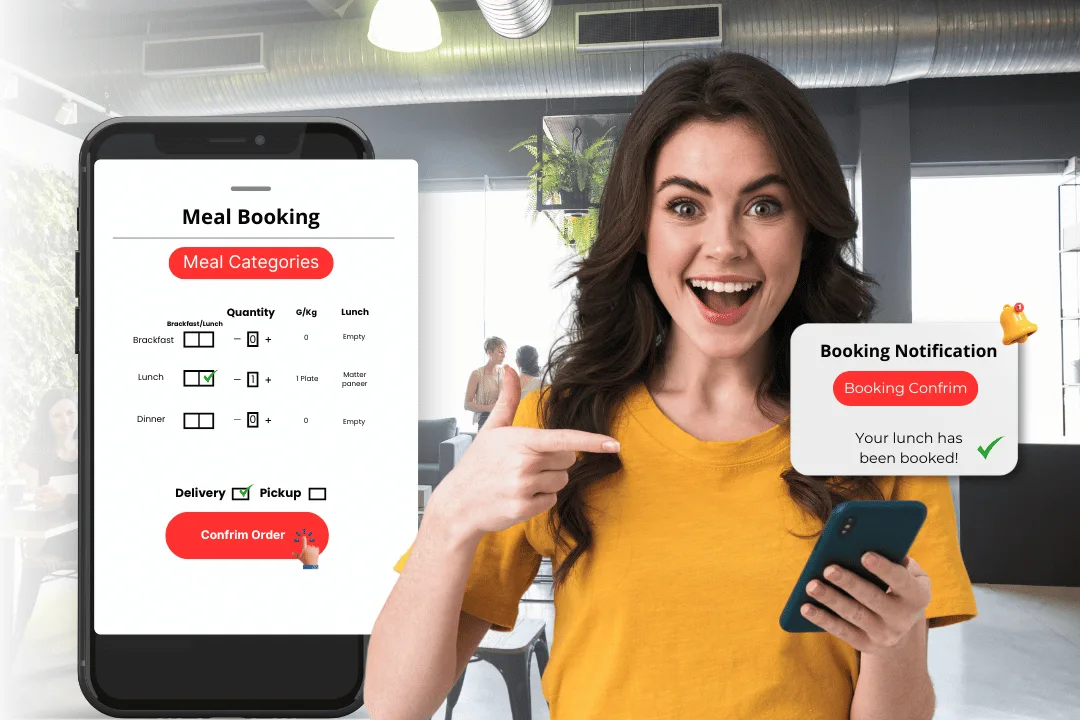
- Introduction: Rethinking the Office Lunch Experience
- What Is a Meal Management Solution?
- Why Modern Workplaces Need a Smart Meal Booking System
- Features that Make Meal Management Seamless
- Benefits of Implementing a Meal Management Platform
- Industry Use Cases
- Choosing the Right Solution
- Final Thoughts: Nourishing the Workplace Culture
1. Introduction: Rethinking the Office Lunch Experience
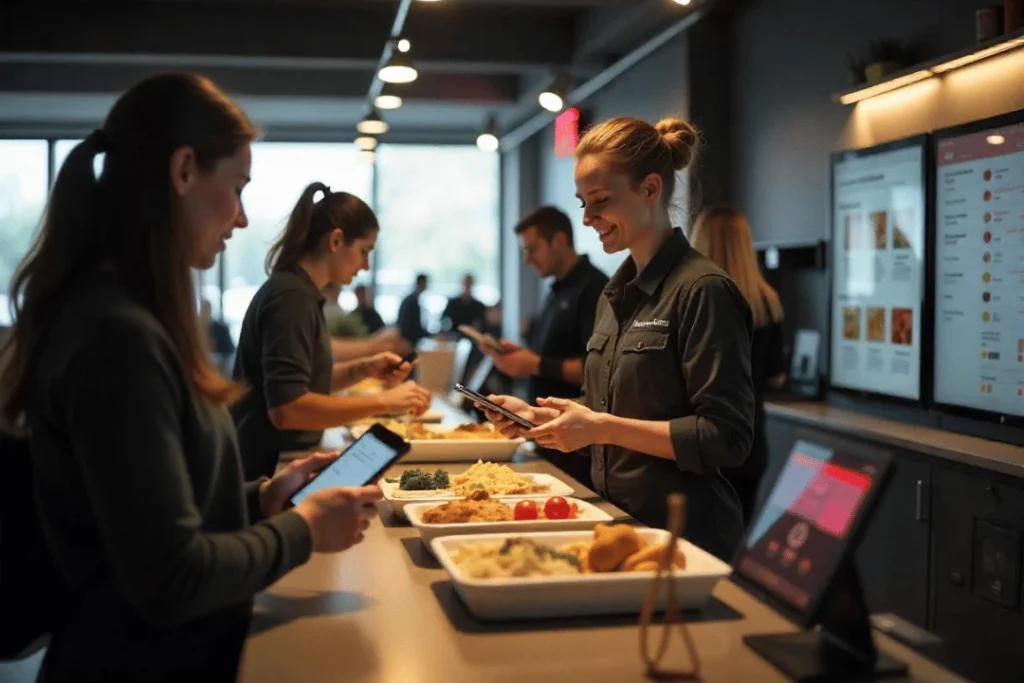
Lunchtime in the office should be a moment of pause—a break that refreshes, connects colleagues, and fuels productivity for the rest of the day. But in many workplaces, it’s still a logistical headache. Cafeterias are either overcrowded or understocked, long queues waste precious time, and food wastage remains a persistent issue.
According to a recent report by the UN, over 931 million tonnes of food is wasted globally each year, and workplaces are a significant contributor due to poor planning and lack of digitization.
Now imagine a workplace where employees can pre-book their meals with a few taps, guests are accounted for effortlessly, and the kitchen prepares exactly what’s needed—no more, no less. That’s the promise of a smart meal management solution, and it’s changing the way organizations think about workplace dining.
2. What Is a Meal Management Solution?
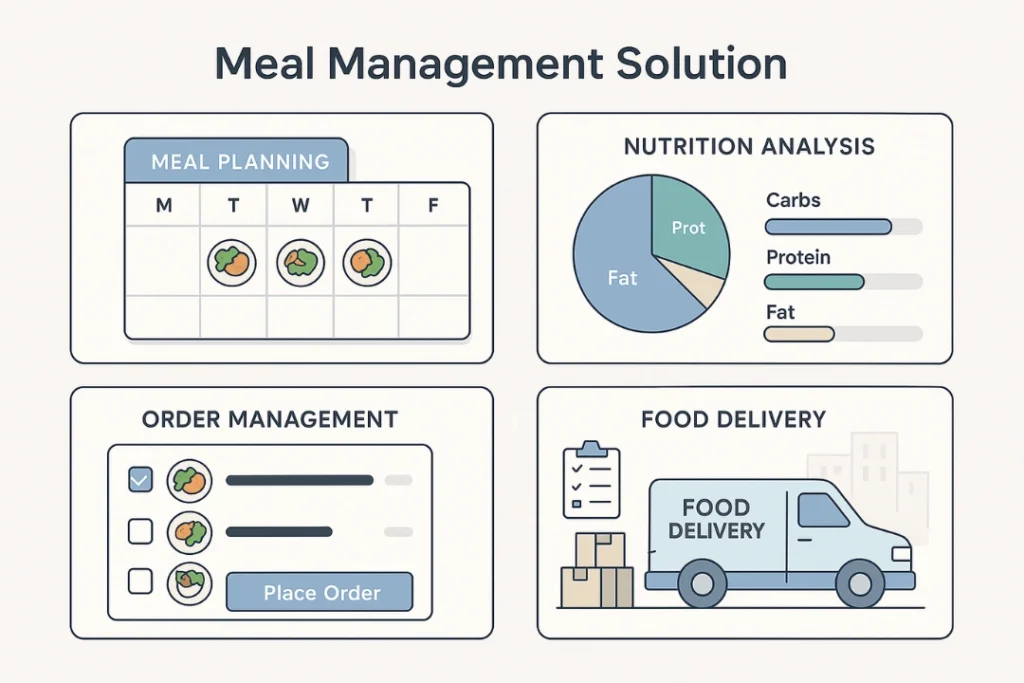
A meal management solution is a digital system designed to streamline meal planning, booking, and tracking in workplaces. It empowers employees to book meals in advance, reduces operational chaos in corporate cafeterias, and minimizes food wastage through predictive planning.
From real-time analytics to guest meal handling, the platform brings efficiency and transparency to what used to be a disorganized daily routine. For businesses focused on employee satisfaction, sustainability, and operational efficiency, adopting such a tool is a win-win.
3. Why Modern Workplaces Need a Smart Meal Booking System
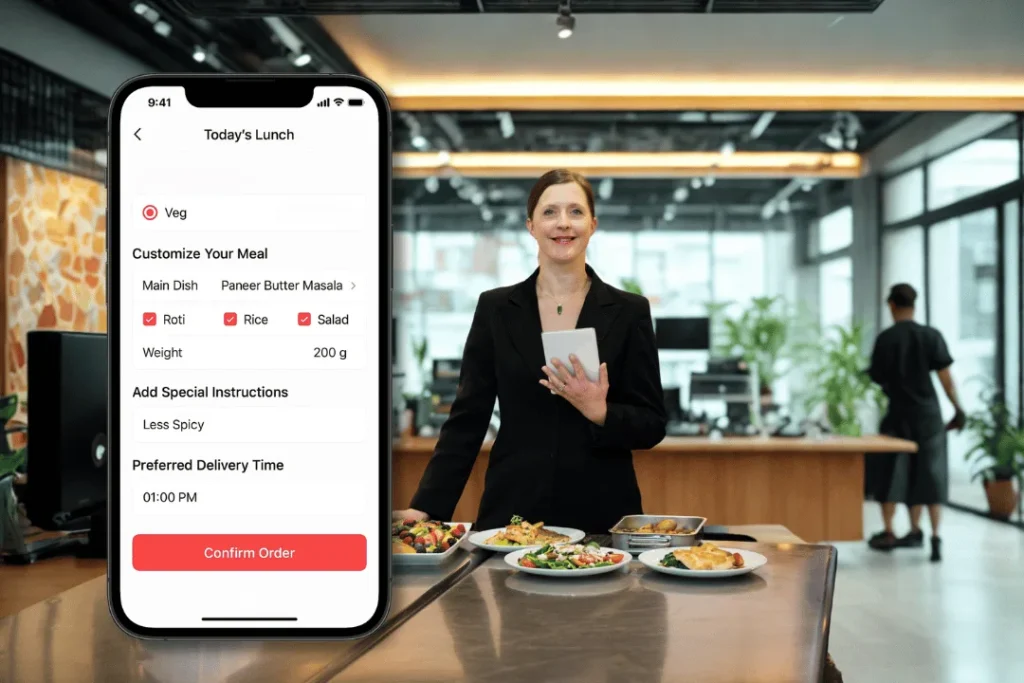
Traditional cafeteria models often lead to over-preparation or under-supply. This not only creates dissatisfaction among employees but also leads to increased food costs and unnecessary waste. Here’s why a digital solution is essential:
- Employees want flexibility and transparency in their meal options.
- Admins need accurate forecasting to reduce excess.
- Companies are seeking sustainable operations aligned with ESG goals.
- There’s a need to simplify guest management and avoid manual tracking.
With hybrid work models gaining momentum, meal planning must be just as agile as the workforce.
4. Features that Make Meal Management Seamless
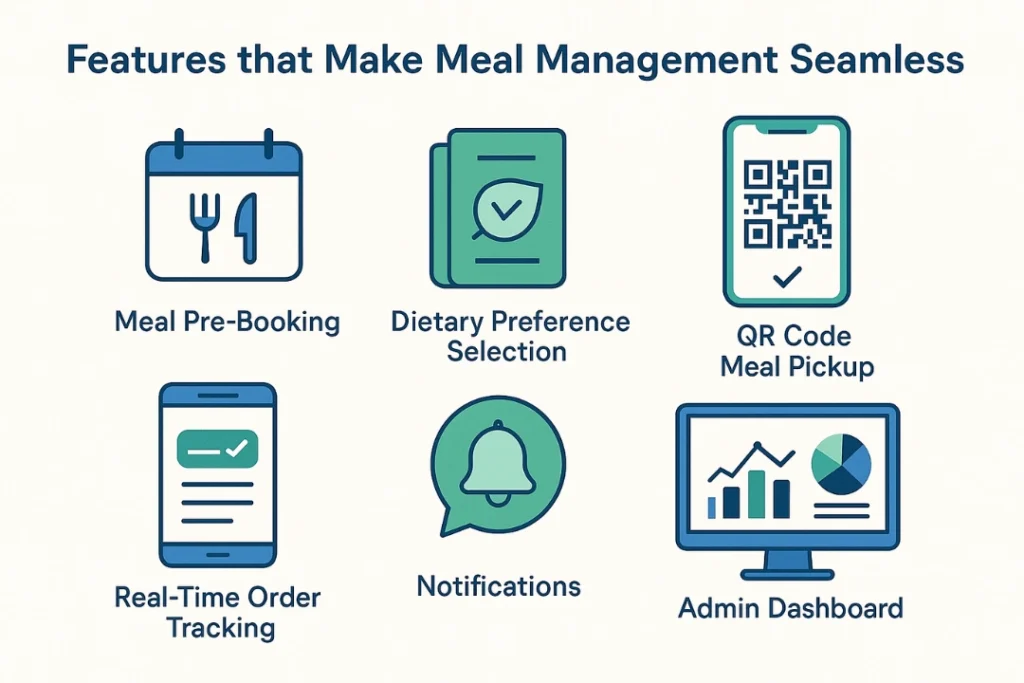
Designed to enhance employee satisfaction and streamline facility operations, our Meal Management Module makes meal planning effortless for admins and employees alike. Whether it’s pre-booking meals, managing preferences, or optimizing operations, we’ve got you covered!
Key Features:
Easy Meal Booking Options
- Pre-Book Meals: Employees can select meals for single or multiple days for themselves or their guests, eliminating last-minute hassles.
- Flexible Cut-Off Times: Admins can configure booking deadlines to suit operational needs, ensuring timely meal preparation.
- Bulk Meal Requests: Admins can add multiple meal requests for employees, streamlining group bookings for meetings or events.
- Meal Variety: Cater to diverse dietary needs with options for breakfast, lunch, refreshments, and dinner.
QR-Based Validation at Meal Collection
- Error-proof Validation: Employees and guests validate their bookings using QR codes, making the process faster and more accurate.
- Convenient Guest Management: Simplify hospitality for clients or visitors with a user-friendly guest booking system.
Real-Time Reports & Predictive Insights
- Detailed Analytics: Monitor daily meal consumption, individual preferences, and attendance trends.
- Cost Analysis: Export reports to assess food cost-effectiveness and vendor performance.
- Forecasting Tools: Predict future meal requirements accurately to streamline kitchen operations.
5. Benefits of Implementing a Meal Management Platform
Here’s how your organization stands to gain:
Reduce Wastage
With real-time insights and demand forecasting, kitchens can prepare just the right amount of food—helping minimize leftovers and shrink your carbon footprint.
Optimize Costs
Smart dashboards and consumption tracking help reduce overheads and support better vendor negotiations. This data-driven approach ensures significant savings on food procurement.
Enhance Employee Satisfaction
Give your team the flexibility to choose meals and make bookings at their convenience. With guest options, clear deadlines, and transparent processes, the dining experience becomes stress-free.
Save Time for Admins
Automated bookings and report generation reduce the time spent on manual coordination, allowing facility managers to focus on strategic tasks.
Improve Guest Hospitality
A well-managed guest meal system reflects professionalism and boosts your brand’s image in client-facing scenarios.
6. Industry Use Cases
The need for digital meal management extends across a wide variety of industries:
- Corporate Offices: Streamline daily meal distribution and accommodate guest lunches seamlessly.
- IT Parks: Serve large-scale workforces with flexible meal slotting and timely service.
- Educational Institutions: Offer pre-ordered meals for staff, faculty, and students, reducing lunch break chaos.
- Healthcare Facilities: Ensure accurate and timely delivery of meals to staff, patients, and guests.
- Manufacturing Units: Align meals with shift schedules and reduce waiting time at canteens.
7. Choosing the Right Solution
When selecting a meal management platform, look for these essentials:
- User-Friendly Interfaces for both admins and employees.
- Mobile Access to allow bookings and QR scanning on the go.
- Customization based on meal types, departments, or employee groups.
- Data Security & Privacy measures to safeguard personal choices and records.
- Seamless Integration with attendance systems, access controls, or other workplace tools.
8. Final Thoughts: Nourishing the Workplace Culture
Meal times aren’t just about food—they’re about community, culture, and care. A digital meal management solution does more than manage logistics—it transforms the way people experience their workday.
From minimizing waste to maximizing employee happiness, it’s an investment that delivers returns far beyond the cafeteria.
With Asti Infotech’s unified workspace management suite, including desk, parking, shift, attendance, and meal management modules, your organization can build a smarter, more efficient, and people-centric workplace.
If you’re dreaming of a workplace where employees begin their workdays with seamlessly managed employee transport, digitized desk management, easy meeting room bookings and efficient meal management through their Apps, give us a buzz for a quick demo!
Let’s step into the future with smart workplace management solutions!
FAQ’S
What is a smart meal management solution for workplaces?
A smart meal management solution is a digital system that streamlines cafeteria operations by automating meal planning, tracking consumption, reducing food wastage, and enhancing employee satisfaction through personalized and timely meal services.
How does meal management software help reduce food wastage at offices?
The software uses data analytics to forecast meal requirements, track consumption patterns, and avoid over-preparation—resulting in significant reductions in food waste and operational costs.
Can smart meal solutions improve employee satisfaction?
Yes, by offering timely, customized, and hassle-free meal experiences, employees enjoy better convenience and service quality, leading to improved morale and workplace satisfaction.
Is the solution suitable for small and medium-sized businesses?
Absolutely. Most meal management providers offer scalable solutions that can be customized to suit the needs of SMBs as well as large enterprises.
What features should I look for in a workplace meal management system?
Key features include real-time meal tracking, automated order planning, waste monitoring, mobile app access, integration with HR systems, and reporting dashboards for analytics.
Read More: Smarter Conversations, Happier Customers: Meet AI Assist